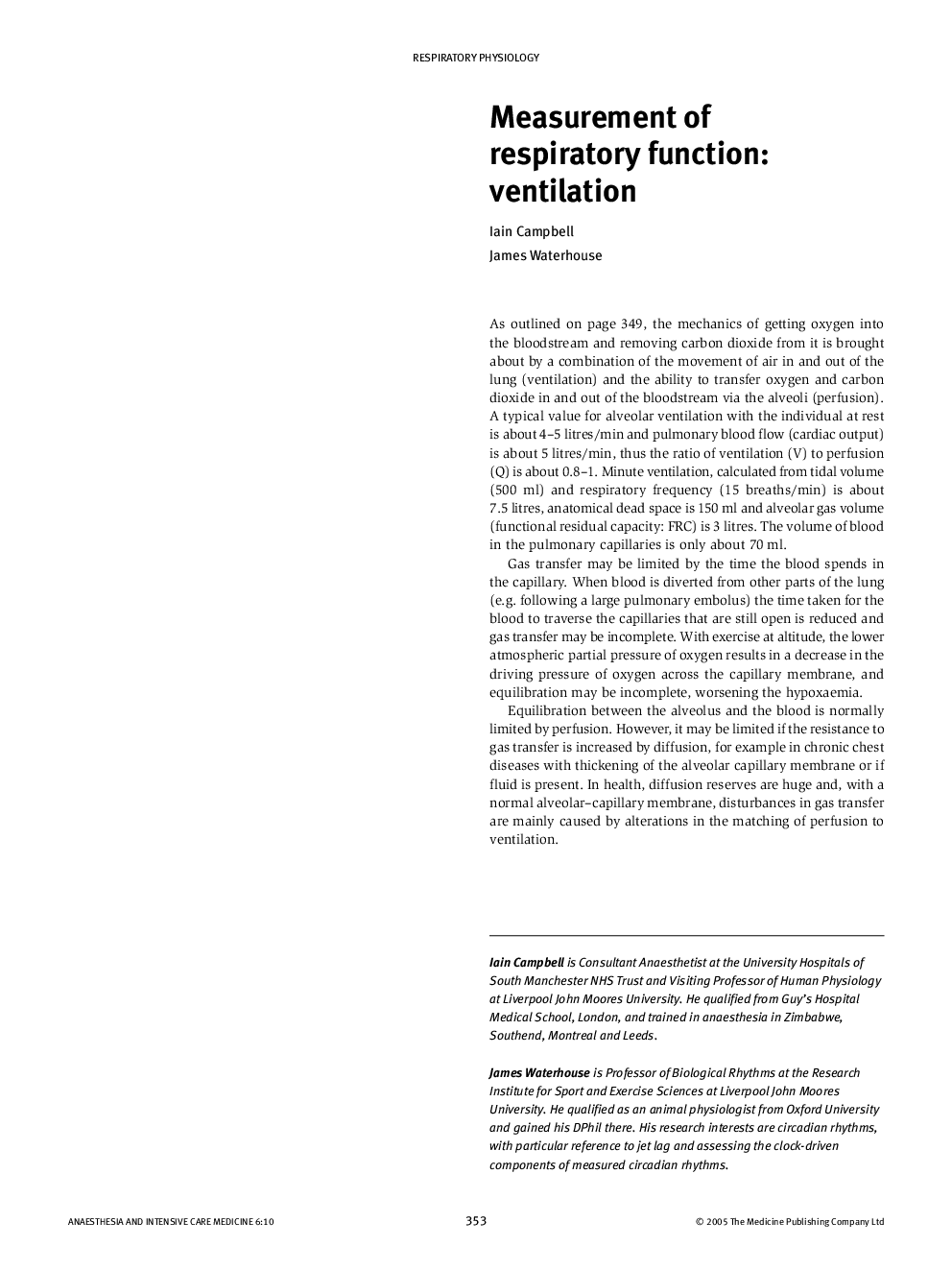| کد مقاله | کد نشریه | سال انتشار | مقاله انگلیسی | نسخه تمام متن |
|---|---|---|---|---|
| 9089482 | 1148670 | 2005 | 5 صفحه PDF | دانلود رایگان |
عنوان انگلیسی مقاله ISI
Measurement of respiratory function: ventilation
دانلود مقاله + سفارش ترجمه
دانلود مقاله ISI انگلیسی
رایگان برای ایرانیان
کلمات کلیدی
موضوعات مرتبط
علوم پزشکی و سلامت
پزشکی و دندانپزشکی
بیهوشی و پزشکی درد
پیش نمایش صفحه اول مقاله

چکیده انگلیسی
Ventilation is traditionally assessed by measuring static lung volumes (e.g. total lung capacity, vital capacity). Measurement of functional residual capacity requires the use of a tracer gas such as helium or nitrogen. The results are compared with standards for age, weight and height. For clinical purposes, by the bedside, forced expiratory volume in 1 second (FEV1) and forced vital capacity (FVC) may have to suffice. The ratio FEV1 to FVC is a measure of resistance in the medium sized upper airways. Dynamic measurements, such as peak expiratory flow rates and flow volume loops, are also useful, the latter indicating resistance in the smaller more distal airways; the more usual site of disease. Unevenness of ventilation can be assessed from the slope of the alveolar plateau of the expired carbon dioxide concentration curve, or the slope of the nitrogen washout curve used in assessing small airway closure.
ناشر
Database: Elsevier - ScienceDirect (ساینس دایرکت)
Journal: Anaesthesia & Intensive Care Medicine - Volume 6, Issue 10, 1 October 2005, Pages 353-357
Journal: Anaesthesia & Intensive Care Medicine - Volume 6, Issue 10, 1 October 2005, Pages 353-357
نویسندگان
Iain Campbell, James Waterhouse,